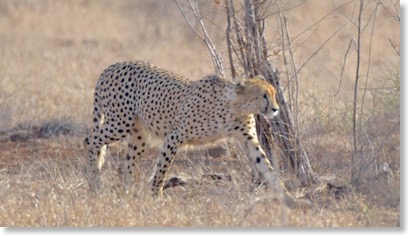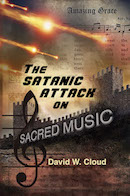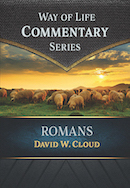866-295-4143, fbns@wayoflife.org

It was one of the many exciting creatures I saw on a three-day photo safari to Kruger Park in South Africa in 2015. The cheetah is one of Kruger Park’s Super Seven (elephant, rhinoceros, leopard, lion, cape buffalo, cheetah, wild dog), and we saw six of the seven each of the three days, something almost unheard of!
“Once abundant all over African and Indian savannas and grasslands, this magnificent animal is now rare and only found in Africa and the Middle East” (“Cheetah,” animalcorner.co.uk).
Hunted almost to extinction for its beautiful skin, the cheetah was put on the Critically Endangered Species by the IUCN. There are an estimated 10,000-12,000 cheetahs left in the wild today, mostly in Africa. In Asia, there are only about 100 cheetahs remaining. There are 680 cheetahs in zoos worldwide, 227 of them in the U.S.
It is a beautiful creature with a tawny, buff, or golden coat sprinkled with evenly spaced black spots. Its handsome head is set off with black stripes running from below each eye to the corners of its mouth. (In contrast, the leopard is lighter colored and lacks the black stripes on its face.) The spots on the cheetah’s tail merge to form four to five rings at the end.
From its head to its tail, it is built for speed. It has a long, lean body (five and a half to seven feet long, weighing 85-145 pounds, and standing about 32 inches tall), large chest and narrow waist, a small, streamlined head, a lightweight skeleton, large muscles, a springlike spine that flexes and straightens to allow its hind legs to achieve huge strides, large nasal passages to take in huge amounts of air, long legs, and large, powerful lungs, liver, and heart. It can produce four strides per second, and each stride can reach an amazing seven to eight meters. After a chase, the cheetah’s heart rate is 200-250 beats per minute and its breaths are 150-200 per minute (as contrasted to its resting breath rate, which is 20-30 per minute).
Its long tail (28 inches) acts as a counterweight and rudder, enabling the cat to keep its balance and to make sudden, sharp turns at high speed.
The cheetah is largely a day hunter that uses its sight to find prey. Unlike other large cats, such as lions, the cheetah does not have good night vision, but its large, forward-looking eyes provide binocular vision so that it can see details at a distance of five kilometers. “The retinal fovea of the eye is of an elongated shape, giving a sharp wide-angle view” (“Cheetah Facts,” bigcatrescue.org).
The cheetah’s hearing is also excellent, and it can pick up higher frequencies than humans.
The black marks beneath its eyes shield them from daylight glare. Some sports players imitate this with black eyeliner. The cheetah’s eyes have a stabilization feature to keep them in sharp focus while the creature is running at high speeds (“Cheetah,” animalcorner.co.uk).
Though the cheetah is blazing fast, it is limited to a high speed run of about 300 yards. Thus, it creeps as close to its prey as possible to begin the chase.
It trips its prey by hooking the back legs with a swipe of its front paw. “There is a large curved dewclaw on this paw, which helps to trip prey up” (Charlette Guillain, Cheetahs, p. 18). It kills its prey by gripping the throat with its teeth and jaws and strangling it.
The cheetah’s claws are semi-retractable (not fully as some other cats). This assists in taking off quickly and maintaining traction.
The cheetah needs to drink infrequently (every three or four days), as it gets most of its water from its prey.
The cheetah is not an aggressive animal like a lion, leopard, or tiger and is rarely dangerous to humans.
In fact, cheetahs are smart animals that respond well to human training. They have been used as hunting animals by Egyptians, Babylonians, Assyrians, Persians, Chinese, Indians, and others. For example, cheetahs were used by Akbar the Great, third ruler of the Mughal dynasty in India. He moved around his empire with a large army, “holding court in a splendid camp laid out like a capital city but composed entirely of tents.” On these journeys he engaged in hunting, using cheetahs to pursue deer and other prey.
Unlike a lion or tiger, the cheetah doesn’t roar (lacking a floating hyoid bone in its neck). For this reason it is labeled a Lesser Cat rather than a Great Cat. It purrs, hisses, chirps, and growls. The chirps are used to communicate with other cheetahs.
It can even mimic some bird calls, an ability it uses to attract unsuspecting birds.
The baby cheetah grows a mantle on its back that acts as protection against the weather. It disappears after three months. The cubs are constantly in danger to predators such as lions, jackals, hyenas, even large birds. The baby cheetah learns to hunt from its mother for about two years and doesn’t become fully proficient until about three years.
- Receive these reports by email
- www.wayoflife.org
______________________
Sharing Policy: Much of our material is available for free, such as the hundreds of articles at the Way of Life web site. Other items we sell to help fund our expensive literature and foreign church planting ministries. Way of Life's content falls into two categories: sharable and non-sharable. Things that we encourage you to share include the audio sermons, O Timothy magazine, FBIS articles, and the free eVideos and free eBooks. You are welcome to make copies of these at your own expense and share them with friends and family. You may also post parts of reports and/or entire reports to websites, blogs, etc as long as you give proper credit (citation). A link to the original report is very much appreciated as the reports are frequently updated and/or expanded. Things we do not want copied and distributed are "Store" items like the Fundamental Baptist Digital Library, print editions of our books, electronic editions of the books that we sell, the videos that we sell, etc. The items have taken years to produce at enormous expense in time and money, and we use the income from sales to help fund the ministry. We trust that your Christian honesty will preserve the integrity of this policy. "For the scripture saith, Thou shalt not muzzle the ox that treadeth out the corn. And, The labourer is worthy of his reward" (1 Timothy 5:18). Questions? support@wayoflife.org
Goal:Distributed by Way of Life Literature Inc., the Fundamental Baptist Information Service is an e-mail posting for Bible-believing Christians. Established in 1974, Way of Life Literature is a fundamental Baptist preaching and publishing ministry based in Bethel Baptist Church, London, Ontario, of which Wilbert Unger is the founding Pastor. Brother Cloud lives in South Asia where he has been a church planting missionary since 1979. Our primary goal with the FBIS is to provide material to assist preachers in the edification and protection of the churches.
Offering: Offerings are welcome if you care to make one. If you have been helped and/or blessed by our material offerings can be mailed or made online with with Visa, Mastercard, Discover, or Paypal. For information see: www.wayoflife.org/about/makeanoffering.html.





